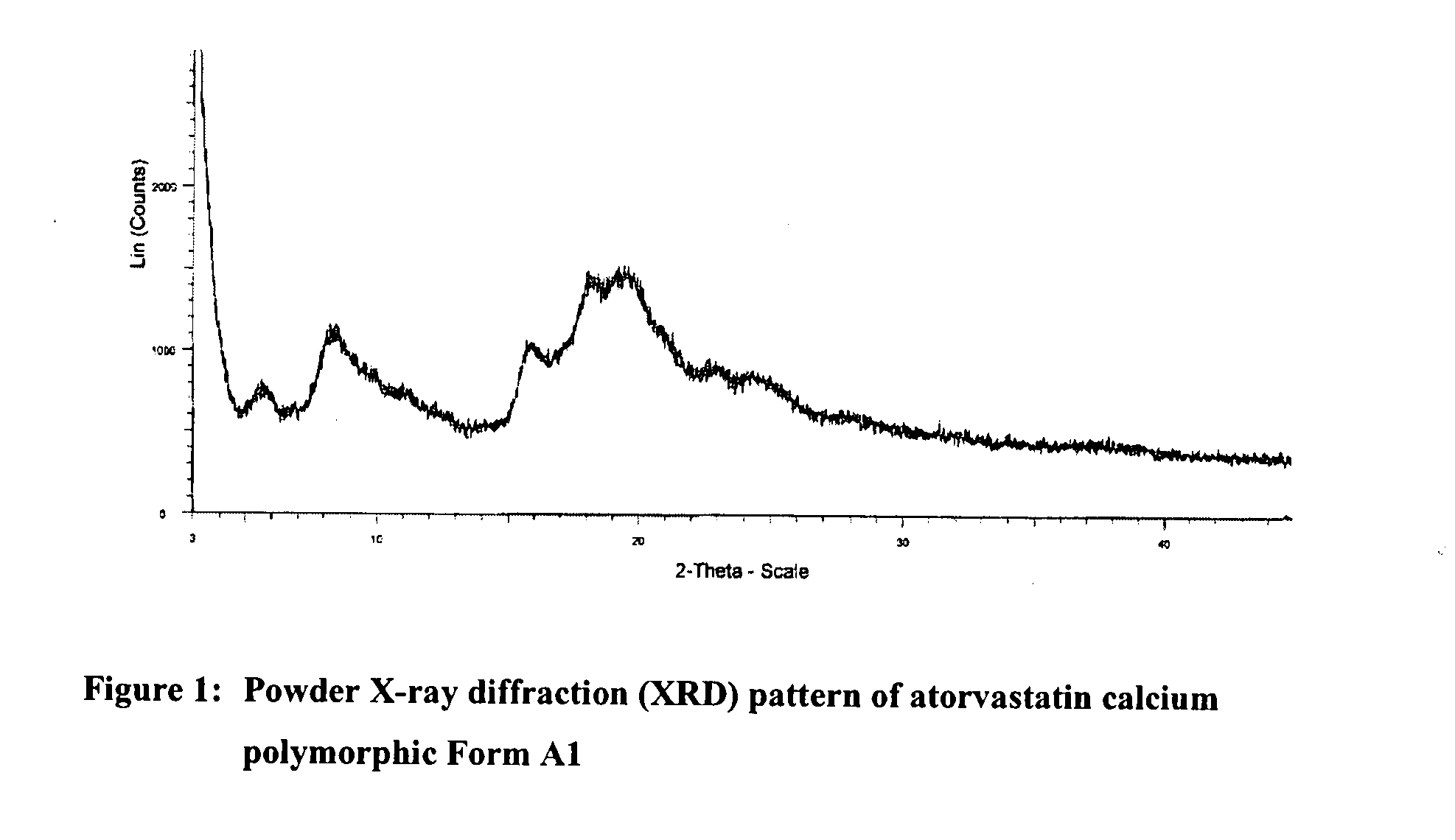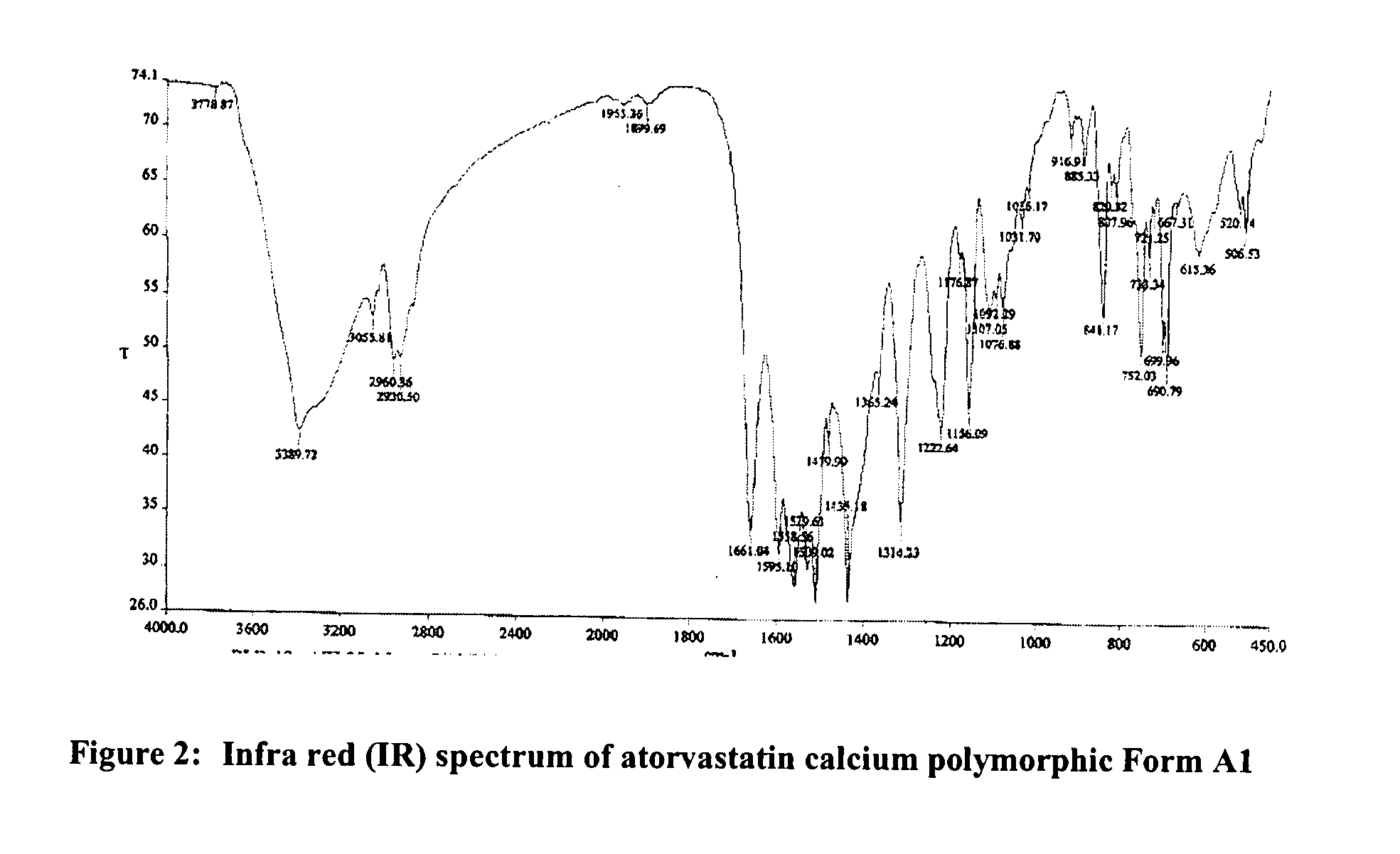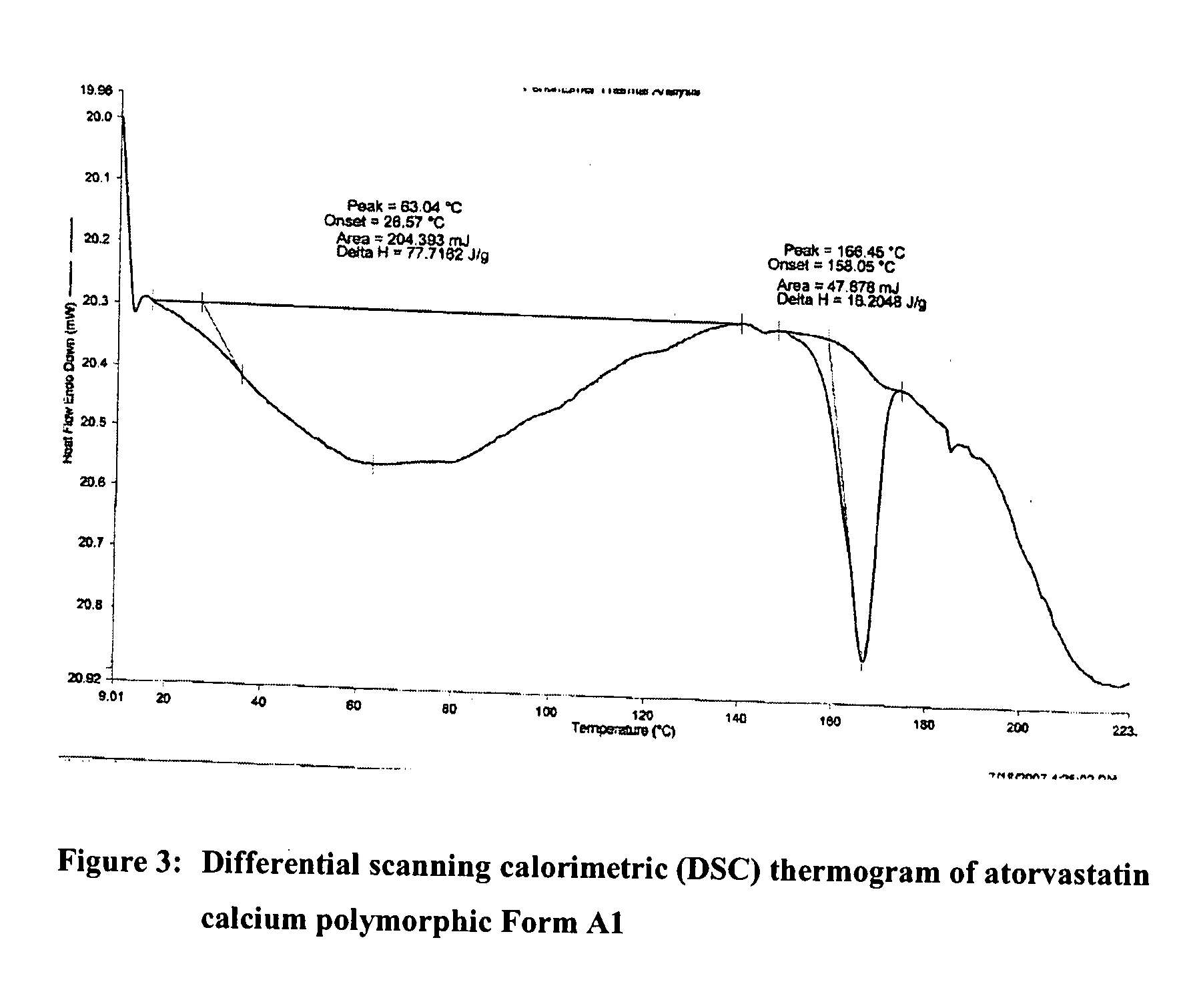Novel Polymorph of Atorvastatin Calcium and Use Thereof for the Preparation of Amorphous Atorvastatin Calcium
- Summary
- Abstract
- Description
- Claims
- Application Information
AI Technical Summary
Benefits of technology
Problems solved by technology
Method used
Image
Examples
example 1
Preparation of (4R-cis)-6-[2-[3-phenyl-4-(phenylcarbamoyl)-2-(4-fluorophenyl)-5-(1-methylethyl)-pyrrol-1-yl]-ethyl]-2,2-dimethyl-[1,3]-dioxane-4-yl-acetic acid tertiary butyl ester (dimethyl ketal of atorvastatin tert-butyl ester) of formula IV
[0158]A mixture of (±)-4-fluoro-α-(2-methyl-1-oxopropyl)-γ-oxo-N,β-diphenyl benzenebutane-amide (300 g), (4R-cis)-1,1-dimethylethyl 6-(2-aminoethyl)-2,2-dimethyl-1,3-dioxane-4-acetate (206 g), cyclohexane (2100 ml), toluene (450 ml), tetrahydrofuran (450 ml) and trimethyl acetic acid (48.6 g) were heated to reflux temperature 80 to 85° C. for about 50 to 55 hours. The reaction mass was cooled and diluted with toluene (600 ml). The reaction mixture was then washed initially with water (2×1500 ml), then with 5% aqueous sodium carbonate solution (1200 ml) followed by water (1500 ml) and brine (20%, 1500 ml). The organic layer was charcoalized with activated carbon (15 g) for 1 hour at 25 to 30° C. followed by filtration to remove charcoal from so...
example 2
Preparation of amorphous atorvastatin tertiary butyl ester of formula III
[0159](4R-Cis)-6-[2-[3-phenyl-4-(phenylcarbamoyl)-2-(4-fluorophenyl)-5-(1-methylethyl)-pyrrol-1-yl]-ethyl]-2,2-dimethyl-[1,3]-dioxane-4-yl-acetic acid tert-butyl ester (10 g) was suspended in isopropanol (150 ml) under stirring. This was followed by the addition of 1N hydrochloric acid (21 ml) at 25 to 30° C. The reaction mixture was heated at 40 to 45° C. and stirred for 4 to 5 hours at 40 to 45° C. The resulted mass was cooled at 20 to 25° C. The pH of reaction mass was adjusted to 7 to 7.5 by adding 5% w / v sodium bicarbonate solution maintaining temperature between 25 to 30° C. The neutralized mass was concentrated under vacuum at 40 to 45° C. Next, water (100 ml) and dichloromethane (100 ml) were added to the concentrated mass and stirred the reaction mass for 10 minutes. The organic layer was separated off and the aqueous layer was extracted with dichloromethane (2×100 ml).The combined organic layer was w...
example 3
Preparation of Form A1 of atorvastatin calcium (atorvastatin hemi-calcium salt)
[0160]Atorvastatin sodium (100.0 g) was dissolved in purified water (7000 ml) under stirring at 40 to 45° C. The clear solution was cooled at 25 to 30° C. The pH of solution was adjusted about 7.9 to 8.5 by adding 6N hydrochloric acid at 25 to 30° C. under stirring. Next, 10% aqueous calcium acetate hemihydrate solution (17.6 g in 170 ml purified water) was added slowly at 25 to 30° C. The reaction mass was stirred for 10 to 12 hours at 25 to 30° C. The resulted solid was filtered and washed with purified water and dried at 55 to 60° C. under vacuum to produce 70.6 g of Form A1 of atorvastatin calcium.
PUM
| Property | Measurement | Unit |
|---|---|---|
| Temperature | aaaaa | aaaaa |
| Temperature | aaaaa | aaaaa |
| Temperature | aaaaa | aaaaa |
Abstract
Description
Claims
Application Information
 Login to View More
Login to View More - R&D
- Intellectual Property
- Life Sciences
- Materials
- Tech Scout
- Unparalleled Data Quality
- Higher Quality Content
- 60% Fewer Hallucinations
Browse by: Latest US Patents, China's latest patents, Technical Efficacy Thesaurus, Application Domain, Technology Topic, Popular Technical Reports.
© 2025 PatSnap. All rights reserved.Legal|Privacy policy|Modern Slavery Act Transparency Statement|Sitemap|About US| Contact US: help@patsnap.com



